Sir Malcolm Campbell – Bluebird K4 ‘slipper’
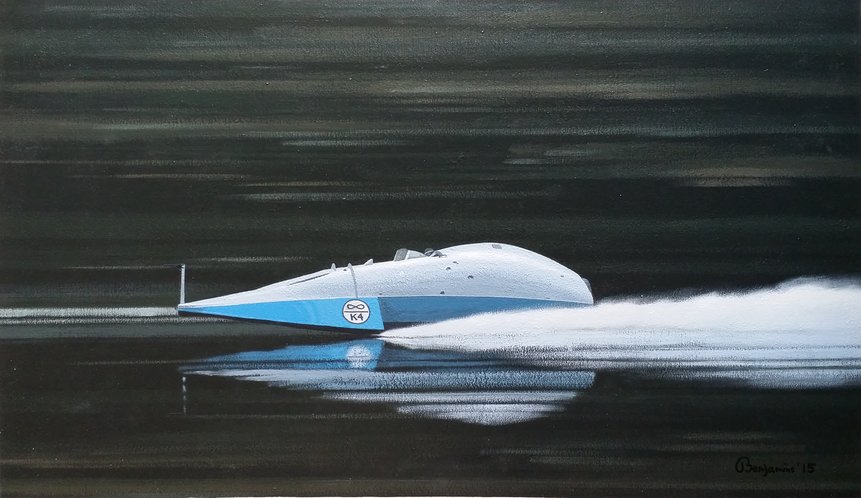
‘Towards a goal’ by Arthur Benjamins
The Bluebird K4 propeller driven hydroplane of Sir Malcolm Campbell was converted to a pure thrust jet hydroplane by swapping the Rolls Royce ‘R’ type engine for a deHavilland Goblin ll turbojet in 1947. This changed the shape of the upper deck considerably and hence the nickname of the ‘slipper’. However subsequent trials with the craft approaching 90mph on Coniston Water showed the craft to be unstable following the conversion and she was later converted back to propeller driven. If readers have a copyright photo of the K4 slipper they wish to contribute to this history please contact us and we will be pleased to include it herein.
John R Cobb – Crusader K6
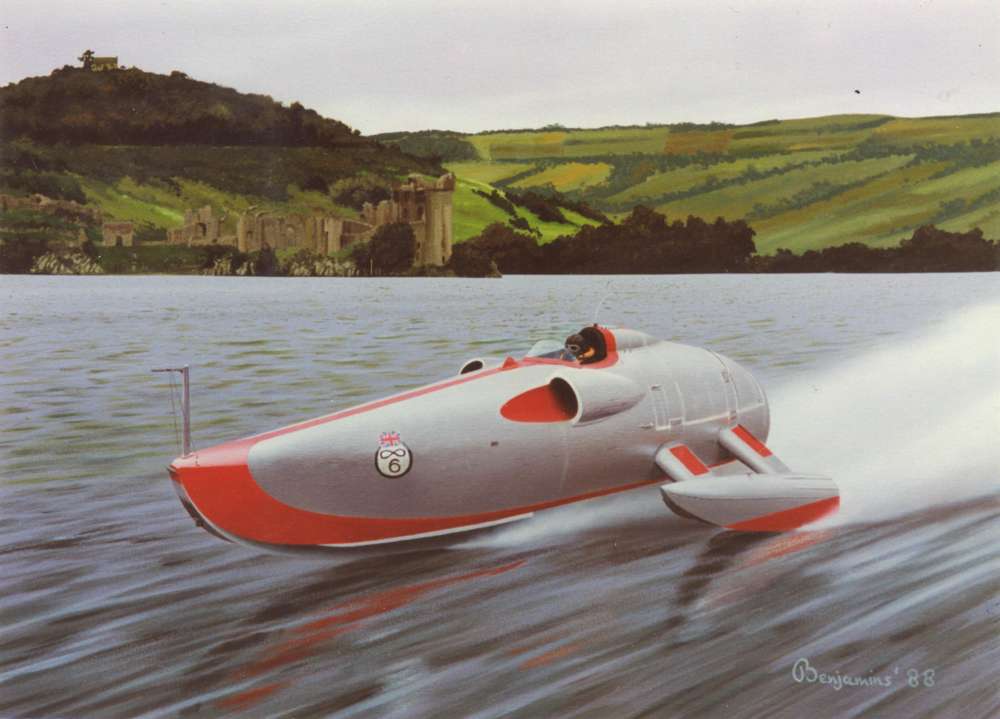
‘A September Song’ by Arthur Benjamins
John Cobb had broken the land speed record in a car designed by Reid Railton and had set up a record of 397 mph (oin fact this record stood until 1964 when Donald Campbell broke it in the Proteus Bluebird). Like Segrave and Campbell before Cobb was lured into the pursuit of higher speeds on water. His hydroplane Crusader was also designed by Reid Railton and built by Vospers under Peter DuCane. It was the first craft designed specifically for jet power and to overcome the major limitations of the Ventnor configuration. It was built using seaplane technology and materials with a wooden hull and metal components for additional strength. The craft consisted of two planning surfaces aft, outrigged on floats, with only one narrow beamed planning surface fore tapering to a point. This design reduced lift to a minimum by removing the kite area of the front deck, nearly cancelling it out altogether by moving the centre of pressure aft of the centre of gravity. Crusader’s all up weight was 6,500 lbs. and the propulsion unit was a de Havilland Ghost turbo‐jet engine developing 5’000 lbs. thrust.
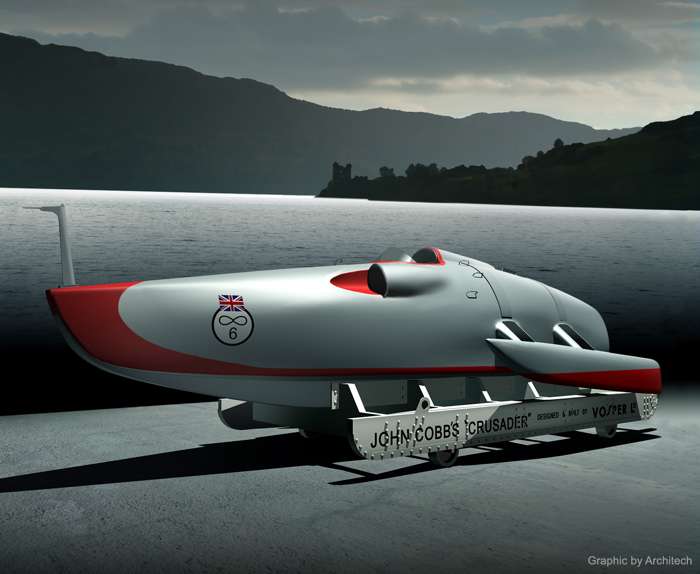
Crusader Illustration – Architech
Loch Ness ‐ Monday September 29th. At 11 am conditions were okay and all concerned went to their stations again. 15 minutes was allowed for various washes to die down and then Crusader was off. Crusader approached the measured distance, running beautifully at extremely high speed, before she hit a system of waves with a crack that echoed around the steep walls of the Loch. From the fact that the average speed of 206.89 mph was recorded for the run and that for a substantial part of the second half mile, the engine was cut or at very much reduced power, the speed was approx. between 240 ‐ 250 mph, at the stage when the waves were met.
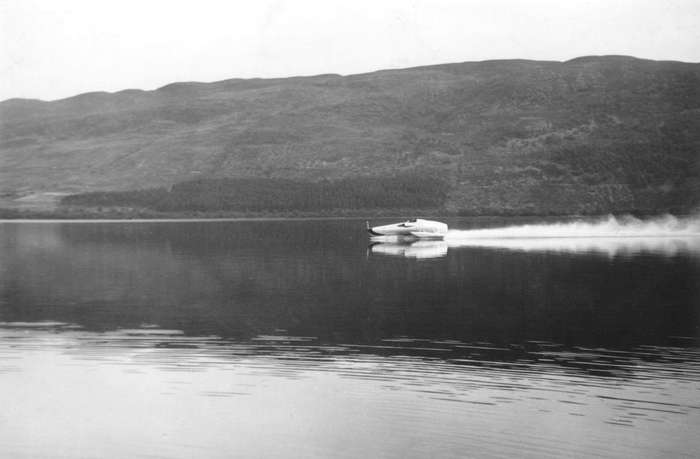
Crusader at Speed – Architech
Cobb sensing that all was not well lifted his foot from the throttle to find the craft travelling at the same speed. Having passed the first ‘hump’ Cobb re‐applied the throttle. The first impact with the wave altered the form of the front planing shoe so that when Crusader hit the second wave the craft pitched down further than before and Cobb lifted his foot off the throttle once again, whilst Crusader still held her speed, building up a gradually increasing instability or ‘porpoising’ culminating in the nose of the craft diving‐ The craft disintegrated and Cobb was killed as a result of the injuries sustained. If readers have a copyright photo of the Crusader they wish to contribute to this history please contact us and we will be pleased to include it herein.
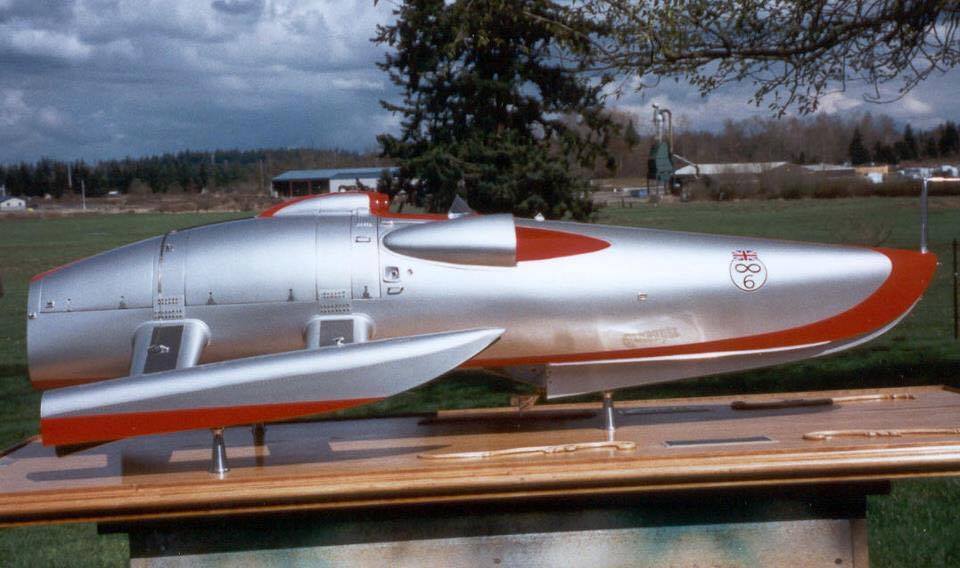
credit Sally Joslin through Steve Holter
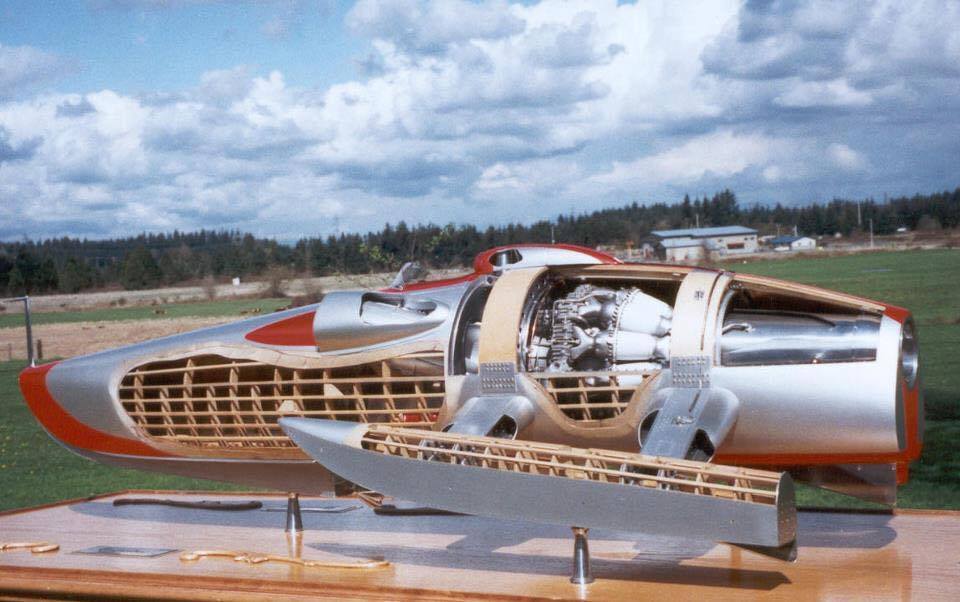
credit Sally Joslin through Steve Holter
